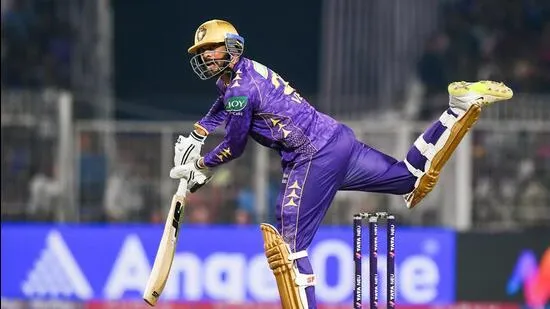
sanjeev
khelja|05-04-2025
Kolkata: Aggression does not have a one-size-fits-all template. Ask Sunrisers Hyderabad (SRH) who, despite not changing their approach, have plummeted to 120 after threatening to mow down the 300-run barrier in the matter of three games.
And then there are the Kolkata Knight Riders (KKR). They were smarting from a crushing defeat in Mumbai but still showed the enterprise to pace their way to 200. Tellingly, they have found this spirit collectively and through a variety of sources, but most crucially by acquiring a sense of responsibility in the batting. The result? A glaring gap between the two teams.
There is more to it than what meets the eye of course. Acquiring a trend now is the way Travis Head and Abhishek Sharma have been dismissed early by KKR pacers three matches in a row. Which in turn starts to dispute the see-ball-hit-ball theory that seemed to be working fine not so long ago. Quite predictably, they are still getting backed.
"I think you gotta be realistic," said Sunrisers captain Pat Cummins at the post-match presentation here on Thursday. "Three games in a row, and it hasn't come off for us, but it was only less than two weeks ago that we did put on 280. So, I think, you talk about options. I still think our batters are at their best when they're taking the game on, but, of course, you talk about, 'Could you have taken a different option in those situations?'"
All good and fine when the pitch suits that approach. And it totally didn't at Eden Gardens as bowlers taking pace off the ball compounded the effect that a two-paced pitch was already having on the batters. Both sides suffered, but KKR at least learned and adapted. Like Venkatesh Iyer, who hit just two boundaries in the first 17 balls he faced. That soared to eight boundary hits in the next 12 balls. Rinku Singh's batting followed a similar arc as well.
"A basic but very important meaning of aggression is to show positive but correct intent when we play cricket," said Iyer when asked about his batting approach. "If we are 50 for six and I still go and tonk everything, that's positive but not correct. If we are to call ourselves smart cricketers, it's very important to read any situation and then react accordingly. Aggression does not mean hitting every ball for a maximum. It's about how you understand the conditions and can maximise the conditions in your favour."
Most of the groundwork was done by Ajinkya Rahane and Angkrish Raghuvanshi though, adding 81 in 51 balls and more importantly prepping the incoming batters with pitch updates. "The messages they sent during the time-out made us understand that it's not an easy pitch to just go out there and hit. You have to take your time," said Iyer.
"So it was important for us not to chew a few balls, but to take time to understand what the pitch has to offer. And I have that luxury because we have Rinku, Ramandeep and (Andre) Russell in the backend. Even if I take a few balls, I know that if I can cover it to an extent, we still have our engine room who can demolish any bowling attack. So the plan was to understand the pitch first and then react accordingly."
Could Sunrisers have adopted the same approach? Ideally. Such is the format though that there seems no other way to chase 200 but to go bang-bang from the first over. But it's easier to implement on a pitch where batters can hit through the line, not one where the ball keeps holding up. Sunrisers never looked to factor in that hindrance. Which is why Head lasted two balls, Sharma six. And unlike Ishan Kishan, neither got out to shots where they had timed the ball sweetly. They will still treat this failure as one-off. That's the thing about blinkered aggression-you just need one scintillating performance to justify multiple failures.

New Zealand defeated Pakistan by 43 runs and won ODI series 3–0

Shadow dark darkness on the field as soon as you put the ball, watch terrible video

IPL 2025: 3 heroes and 3 zeroes of LSG vs MI match

PBKS vs RR Live Streaming in South Africa






